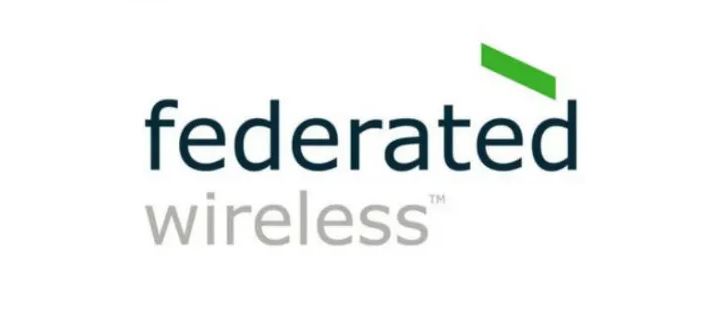Federated Wireless teams with AWS, Microsoft on cloud-based CBRS offerings
Federated Wireless this week announced a new Citizens Broadband Radio Service (CBRS) private-network offering focused on Internet of Things (IoT) applications that will be delivered via marketplace platforms run by cloud giants Amazon Web Services (AWS) and Microsoft Azure.
Federated Wireless CEO Iyad Tarazi stressed the importance of simplicity in the connectivity-as-a-service (CaaS) offerings that leverages the CBRS band on 3.5 GHz spectrum. Customers would pay a one-time setup fee to establish the network and a monthly fee for ongoing service.
“With Amazon, we’re doing it in partnership with them, to integrate all of their IoT capabilities and bring it to market,” Tarazi said during an interview with IWCE’s Urgent Communications. “For Microsoft, we’re integrating our connectivity solution with their IoT platform, their edge compute and their orchestration platform to bring private networks to their customers, using their solutions.
“Both of these announcements will have quite a simple model of a connectivity-as-a-service offering, where you can do one click to buy a service. For a customer, there is minimum risk of capital, complexity and so on.”
Federated Wireless does not plan to compete with Wi-Fi networks or carrier-broadband systems that provide typical Internet access, Tarazi said. Instead, Federated Wireless hopes its private CBRS services can provide the quality-of-service needs for enterprise IoT applications, he said.
“These are new networks,” Tarazi said. “These networks really are intended to simplify the deployment of IoT and automation solutions—things like cameras, robotics, warehouse automation, security solutions, digital signage. These are solutions that require a lot of data and a lot of fidelity. These solutions require a lot of predictability and security-type networks.
“Enterprises want to use them in ways that are really simple and under their control, the same way they do with Wi-Fi.”
Based on early discussions with potential customers, most enterprises plan to access the CBRS spectrum as General Authorized Access (GAA) users, which does not require the acquisition of a costly spectrum license. However, some enterprises have expressed more interested in accessing CBRS spectrum reserved for Priority Access Licenses (PAL) users, either as direct licensees or as an entity that leases PAL access for a specific geographic area from a direct PAL. The FCC is scheduled to auction PALs later this year.
Whether an enterprise accesses CBRS spectrum as a PAL or GAA user, Federated Wireless plans to make the process of installing the connectivity needed to support an IoT solution as simple as possible, according to Tarazi.
“In the connectivity-as-a-service model, we would deploy, install, configure, manage and support—we basically do everything end-to-end for the customer,” he said. “We’ll buy the equipment for them, we’ll install it, we’ll manage it. We set alarms on it, we do customer support on it, and we do it in a cost-effective and predictable way, so these application will work well.
“We’ll go to our equipment partners and buy them [the access points] and install them through our installation partners. We’ll get them up and running. Once we get there, we will manage it from that point on, in order for the customer to get a one-click experience and a total managed-service experience. And, we will give them SLAs [service-level agreements] in the end.”
Such SLAs are possible because the Federated Wireless private CBRS connectivity utilizes the same 4G and 5G protocols—complete with traffic-prioritization schemes—leveraged by carriers, but the network can be controlled at the enterprise level, Tarazi said. This LTE-based approach also provides security benefits, he said.
“Think of this as any other 4G or 5G solution,” Tarazi said. “One of the number-one advantages of using 4G or 5G, instead of using Wi-Fi, is the inherent security that’s inside the system. Everything is encrypted, there are security keys, there is a lot of multi-stage authentication that goes in the network.
“There are a lot of SIM controls to really understand who is actually on the network and what they’re doing. There are a lot of security features that are inherent in these 4G and 5G networks. All of that is portable to this model, because all we’re doing is implementing the 4G/5G model into these networks.”
Leveraging LTE functionality eventually could open the doors to higher-level, mission-critical applications being supported by the Federated Wireless CBRS connectivity, but Tarazi emphasized that early deployments are designed to provide enterprises with “carrier-grade” connectivity levels.
“The intent here is to keep it really simple,” Tarazi said. “The perfect application here could be that we integrate and simplify—as much as possible—push-to-talk solutions, tablets and cameras. We would really focus on people looking for push-to-talk deployments and make sure that there’s a simple connectivity solution for them to deploy push to talk at the right level. This way, they’re not thinking about connectivity.
“At this stage, is not trying to figure out how to create all of these custom solutions to every customer but to bring them simplicity and cost reduction by focusing on the application itself. We want to change the dialogue from, ‘Let’s design the network together,’ to ‘What’s your application? I’ll get you the network you need to support that application.’”
Federated Wireless began work with some customers this week, and Tarazi believes the CBRS CaaS product will evolve quickly throughout 2020.
“Our intent is—over the next several months—to continue to scale, improve and modify the product, to get it to where it meets the marketplace [needs],” Tarazi said. “We’re following a cloud model, where we would deploy it within the environment, in the right way that enterprises are expecting it. Then, as we turn up customers, we would learn, iterate and continuously improve from that point on.
“I think end of year is probably our target to actually get a clean, hardened solution, as we grow.”

















